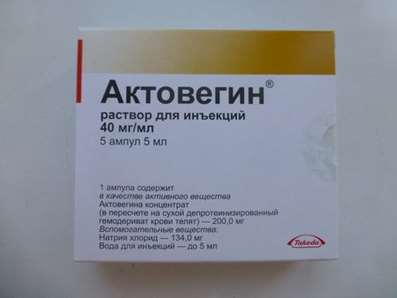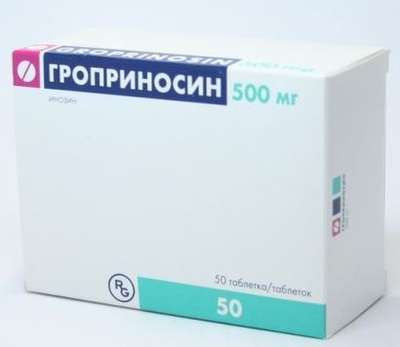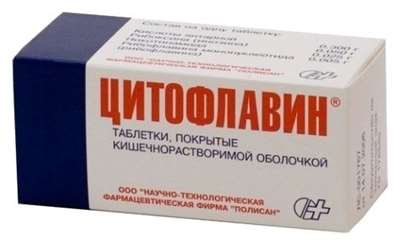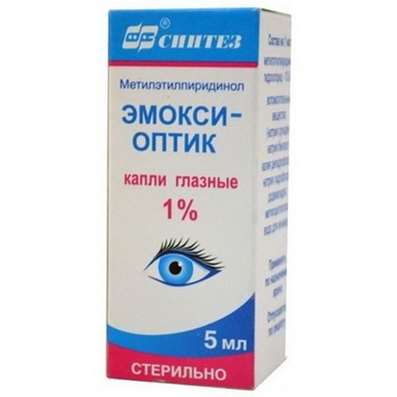Instruction for use: Metoprolol
I want this, give me price
Trade name of the drug – Betaloc, Betaloc ZOK, Vasocardin, Corvitol 100, Metozoc, Metocard, Metocor Adipharm, Metolol,Metoprolol, Metoprolol Zentiva, Metoprolol Organica,Metoprolol retard Akrikhin, Lydalok, Metoprolol-Akrikhin, Metoprolol-Akri, Metoprolol – KRKA, Metoprolol-ratiopharm, Metoprolol-Teva, Metoprolol succinate, Metoprolol tartrate, Serdol, Egilok, Egilok Retard, Egilok S, Emzok
The Latin name of the substance Metoprolol
Metoprololum (genus. Metoprololi)
Chemical rational name: (±) -1- [4- (2-methoxyethyl) phenoxy] -3 - [(1-methylethyl) amino] -2-propanol (as a tartrate or succinate)
Gross formula C15H25NO3
Pharmacotherapeutic group: Beta-blockers
The nosological classification (ICD-10)
E05.9 Thyrotoxicosis, unspecified: tireotoksicski reaction; Enlargement of the thyroid gland with symptoms of hyperthyroidism; The phenomenon of iodine Basedow; Thyroid hyperplasia; hyperthyroid state; Hyperthyroidism; Thyroid dysfunction; Diffuse thyrotoxic goiter; The latent thyrotoxicosis; Increased thyroid function; thyrotoxicosis
G43 Migraine: The pain of migraine; Migraine; hemiplegic migraine; Migraine headache; A migraine attack; Continuous headache; hemicrania
I10 Essential (primary) hypertension: hypertension; Arterial hypertension; Arterial hypertension crisis course; Essential Hypertension; Essential hypertension; Essential hypertension; Essential hypertension; Essential hypertension; Primary hypertension; Arterial hypertension, complications of diabetes; The sudden increase in blood pressure; Hypertensive disorders of blood circulation; hypertensive condition; hypertensive crises; arterial Hypertension; malignant Hypertension; Hypertonic disease; hypertensive crises; accelerated hypertension; malignant hypertension; The aggravation of hypertensive disease; Transient hypertension; Isolated systolic hypertension
I15 Secondary hypertension: Arterial hypertension, complications of diabetes; hypertension; The sudden increase in blood pressure; Hypertensive disorders of blood circulation; hypertensive condition; hypertensive crises; hypertension; arterial Hypertension; malignant Hypertension; hypertensive crises; accelerated hypertension; malignant hypertension; The aggravation of hypertensive disease; Transient hypertension; hypertension; Arterial hypertension; Arterial hypertension crisis course; renovascular hypertension; Hypertension symptomatic; Renal hypertension; Renovascular hypertension; renovascular hypertension; Symptomatic hypertension
I20 Angina [angina]: Heberden disease; Angina pectoris; The attack of angina pectoris; recurrent angina; Spontaneous angina; Stable angina pectoris; Angina rest; Angina progressing; Angina mixed; Angina spontaneous; stable angina; Chronic stable angina; Angina Syndrome X
I20.0 Unstable angina: heberden disease; Angina pectoris; The attack of angina pectoris; recurrent angina; Spontaneous angina; Stable angina pectoris; Angina rest; Angina progressing; Angina mixed; Angina spontaneous; stable angina; Chronic stable angina; Angina Syndrome X
I21 Acute myocardial infarction: Myocardial infarction in the acute phase; Acute Myocardial Infarction; Myocardial infarction with pathologic Q wave and without; Myocardial infarction complicated by cardiogenic shock; Infarction left ventricular; Transmural myocardial infarction; Myocardial infarction netransmuralny (subendocardial); Netransmuralny myocardial infarction; Subendocardial myocardial infarction; The acute phase of myocardial infarction; Acute myocardial infarction;Sub-acute phase of myocardial infarction; Subacute phase of myocardial infarction; Thrombosis of the coronary arteries (the arteries); Threatened myocardial infarction; Myocardial infarction without Q wave
I25 Chronic ischemic heart disease: Coronary heart disease on the background of hypercholesterolemia; Coronary heart disease is a chronic; Coronary heart disease; Stable coronary artery disease; Percutaneous transluminal angioplasty; Myocardial ischemia, arteriosclerosis; Recurrent myocardial ischemia
I25.2 Transferred last myocardial infarction: Cardiac syndrome; Myocardial infarction; post-MI; Rehabilitation after myocardial infarction; Reocclusion of the operated vessel; Angina postinfarctnaya; Status after myocardial infarction; Status after myocardial infarction; myocardial infarction
I27 Other forms of cardiopulmonary diseases: Chronic pulmonary heart disease; Hypertension pulmonary circulation; Pulmonary hypertension; Pulmonary heart disease; pulmonary heart disease; Cardio-pulmonary insufficiency; Secondary pulmonary hypertension; Chronic pulmonary heart; Eisenmenger syndrome
I34.1 prolapse [prolapse] mitral valve: Rupture of papillary muscle; Barlow syndrome; Mitral valve prolapse syndrome; Mitral valve prolapse
I42 Cardiomyopathy: cardiopathy; diffuse cardiomyopathy; Diffuse neobliteriruyuschaya cardiomyopathy; myocardial Gipokaliygistidii; myocardiodystrophy; Acute cardiomyopathy; Chronic cardiomyopathy
I47.1 Supraventricular tachycardia: Supraventricular paroxysmal tachycardia; supraventricular tachyarrhythmia; supraventricular tachycardia; Supraventricular arrhythmias; Supraventricular paroxysmal tachycardia; supraventricular tachyarrhythmias; supraventricular tachycardia; Neurogenic sinus tachycardia; orthodromic tachycardia; Paroxysmal supraventricular tachycardia; Paroxysm of supraventricular tachycardia; Paroxysm of supraventricular tachycardia with WPW-syndrome; Paroxysm of atrial tachycardia; Paroxysmal supraventricular tachyarrhythmia; Paroxysmal supraventricular tachycardia; Politopnye atrial tachycardia; Atrial fibrillation; Atrial tachycardia is true; Atrial tachycardia; Atrial tachycardia with AV block; reperfusion arrhythmias; Reflex Bertsolda-Jarisch; Recurrent sustained supraventricular paroxysmal tachycardia; Symptomatic ventricular tachycardia; Sinus tachycardia; Supraventricular paroxysmal tachycardia; supraventricular tachyarrhythmia; supraventricular tachycardia; supraventricular arrhythmia; supraventricular arrhythmias; Tachycardia of AV connections; supraventricular tachycardia; Tachycardia orthodromic; sinus tachycardia; The nodal tachycardia; Chaotic atrial tachycardia politopnye; Wolff-Parkinson-White
I47.2 Ventricular tachycardia: Torsades de pointes (torsade de pointes); Symptomatic ventricular tachycardia; Torsades de pointes in myocardial infarction; Ventricular fibrillation; Ventricular tachycardia; Ventricular tachyarrhythmias; Ventricular tachycardia; ventricular Tachycardia; Life-threatening ventricular arrhythmias; Sustained ventricular tachycardia; Sustained monomorphic ventricular tachycardia; Paroxysmal ventricular tachycardia torsades; Paroxysmal ventricular tachycardia
I47.9 Paroxysmal tachycardia, unspecified: Paroxysm of ventricular tachycardia; Paroxysmal dysrhythmia; Paroxysmal ventricular fibrillation; Paroxysm sinus tachycardia; Paroxysmal ventricular tachycardia torsades; Paroxysmal atrial fibrillation and flutter
I48 Atrial fibrillation and flutter: Permanent atrial tachyarrhythmias; Relief frequent ventricular rate during atrial flutter or blink; atrial fibrillation; Paroxysm of atrial fibrillation and flutter; Paroxysm of atrial fibrillation; Paroxysmal atrial fibrillation; Atrial premature beats; Tahiaritmicheskoy atrial fibrillation; Tahisistolicheskoy atrial fibrillation; auricular flutter; Life-threatening ventricular fibrillation; Atrial fibrillation; Chronic atrial fibrillation; supraventricular arrhythmia; Paroxysmal atrial fibrillation and flutter; Paroxysmal fibrilloflutter; Atrial premature beats
I49.4 Other and unspecified premature depolarization: extrasystole arrhythmia; extrasystole; extrasystole unspecified
I49.9 Irregular heartbeat, unspecified: Paroxysmal supraventricular tachycardia; extrasystole arrhythmia; Atrial fibrillation tachysystolic; supraventricular tachyarrhythmia; supraventricular arrhythmias; AV reciprocating tachycardia; AV-nodal reciprocating tachycardia; ventricular fibrillation; Irregular heartbeat; Antidromic reciprocating tachycardia; Cardiac arrhythmias; Arrhythmias; Arrhythmia; Heart arythmy; Arrhythmia due to hypokalemia; ventricular tachyarrhythmias; The high frequency of ventricular contraction; Cardiac arrhythmias; Paroxysmal supraventricular arrhythmia; Paroxysmal supraventricular arrhythmia; Paroxysmal dysrhythmia; Paroxysmal atrial-ventricular rhythm; cardiac arrhythmias; supraventricular tachycardia; tachyarrhythmia; Precordial abnormal pulsation
CAS code 37350-58-6
Description
Metoprolol tartrate white, practically odorless, crystalline powder, soluble in water, methylene chloride, chloroform and ethanol, slightly soluble in acetone, insoluble in ether. Metoprolol succinate: white crystalline powder, easily soluble in water, soluble in methanol, sparingly soluble in ethanol and slightly soluble in dichloromethane and 2-propanol, practically insoluble in ethyl acetate, acetone, diethyl ether and heptane.
Pharmacological Properties of Metoprolol
Pharmachologic effect - antianginal, hypotensive, anti-arrhythmic.
Locks mainly beta1-adrenergic receptors of the heart, has no intrinsic sympathomimetic and membrane stabilizing activity. It reduces cardiac output and garden, slows the heart rate, reduces the stimulatory effect of catecholamines on the myocardium during physical stress and mental strain, prevents reflex orthostatic tachycardia. The antihypertensive action is due to a decrease in cardiac output and synthesis of renin inhibition of the renin-angiotensin system and the central nervous system, reduction of baroreceptor sensitivity and, as a result, a decrease in peripheral sympathetic influences. The hypotensive effect develops rapidly (Sad decreases after 15 minutes, maximum - 2 hours) and lasts for 6 hours; while taking metoprolol succinate - the clinical effect of the blockade of beta1-adrenergic receptors saved 24 hours Dad slowly changing: steady decrease is observed after a few weeks of regular intake.. Antianginal effect is the consequence of reducing the frequency and strength of heart contractions, energy consumption and myocardial oxygen demand. Reduces the frequency and severity of coronary heart disease attacks, the death rate for patients diagnosed with myocardial infarction, improves tolerability loads. Metoprolol succinate reduces the risk of death (including sudden death), occurrence of reinfarction (including in patients with diabetes), and improves the quality of life of patients with acute myocardial infarction and idiopathic dilated cardiomyopathy. Antiarrhythmic effect is the elimination of arrhythmogenic sympathetic effects on the conducting system of the heart, slowing the sinus rhythm and speed of the spread of excitation through the AV node, braking automaticity and prolongation of the refractory period. It has a mild negative inotropic effect. Cardioselective saved using daily doses not exceeding 200 mg. Due to the selective beta1-adrenergic receptors theoretically reduce the risk of bronchospasm (in asthma patients with lower lung function decreases life), hypoglycemia and peripheral vasoconstriction.
In the experiments on dogs (up to 105 mg / kg / day for one year), rats (800 mg / kg / day for 2 years) and mice (750 mg / kg / day for 21 months) signs of carcinogenicity is not revealed, but revealed histological changes such as hyperplasia of the liver cells and induration of lung tissue macrophages. When administered to albino mice at doses up to 750 mg / kg / day for 21 months in females increased the incidence of benign lung adenomas, however repetition of the experiment an increase in the incidence of any tumors was observed. The test results of dominant lethal mutations in the mouse, the study of somatic cells chromosomes, test abnormalities somatic cell nuclei in interphase and al. showed no mutagenicity. In rats receiving doses in excess of 55.5 times the maximum daily human dose (450 mg) had no effect on fertility, increased performance and decreased postimplantation death survival of newborn animals (signs of teratogenicity was absent).
Metoprolol tartrate is rapidly and almost completely (95%) absorbed when taken orally, undergoes extensive first-pass metabolism. The bioavailability is about 50% at the first reception and increases to 70% when applied repeatedly. About 12% bound to plasma albumin. Rapidly distributed in tissues, penetrates the blood-brain barrier (the level of the central nervous system is 78% of the plasma concentration), placenta, breast milk (higher than plasma concentrations). The volume of distribution - 5.5 l / kg. Cmax is achieved within 1-2 hours after administration, blood levels vary significantly. T1 / 2 -. 3 to 7 hours Biotransformiroetsa in the liver to form two active metabolites. Write mainly kidneys as metabolites, Cl - 1 liter / min. If ingestion is less than 5% is excreted in the urine in unchanged form, with on / in infusion - about 10%. If the kidney function does not change the bioavailability, but may decrease the rate of excretion of metabolites. In patients with cirrhosis of the liver metabolism slows down and the total clearance (correction dosing regime is not required). Not removed by hemodialysis. The on / in infusion metoprolol tartrate for 10 minutes more and the maximum effect developed after 20 minutes, slowing the heart rate at doses of 5 and 10 mg of 10 and 15%, respectively. After oral Cmax in same doses of metoprolol succinate is 1 / 4-1 / 2 Cmax metoprolol tartrate, but is longer maintained. Bioavailability in doses of 50-400 mg (1 per day) of 23% less from that after administration of a similar dose tartrate. Pharmacokinetic parameters do not depend on the patients age.
Application of the substance Metoprolol
Hypertension mild to moderate severity (monotherapy or in combination with other antihypertensive agents), ischemic heart disease, hyperkinetic cardiac syndrome, abnormal heart rhythm (sinus tachycardia, ventricular and supraventricular arrhythmias including paroxysmal tachycardia, supraventricular tachycardia, extrasystoles, atrial flutter and atrial fibrillation, atrial tachycardia), hypertrophic cardiomyopathy, mitral valve prolapse, myocardial infarction (prevention and treatment), migraine (prevention), thyrotoxicosis (complex therapy); treatment of akathisia caused by antipsychotic drugs.
Contraindications for Metoprolol
Hypersensitivity, AV block II and III degree sinoatrial block, acute or chronic (decompensated) congestive heart failure, sick sinus syndrome, severe sinus bradycardia (heart rate less than 60 beats. / Min), cardiogenic shock, hypotension (Sad less than 100 mm Hg. Art.) expressed by human peripheral blood circulation, pregnancy, breast-feeding.
Restrictions to application
Diabetes, hypoglycemia, allergic history, metabolic acidosis, bronchial asthma, emphysema, bronchitis, non-allergic, hyperthyroidism, psoriasis, pheochromocytoma, liver dysfunction and / or kidney disease, myasthenia gravis, depression, conduct of general anesthesia, the elderly and children's age.
Pregnancy and breast-feeding
Perhaps if the expected effect of therapy outweighs the potential risk to the fetus. At the time of treatment should stop breastfeeding.
Side effect of Metoprolol
From the nervous system and sensory organs: at least 10% - weakness; 1-9,9% - dizziness and headache; 0.1-0.9% - poor concentration, drowsiness / insomnia, nightmares, depression, muscle cramps, paresthesia; 0,01-0,09% - nervousness, anxiety, weakening of libido, impaired vision, xerophthalmia, conjunctivitis; less than 0.01% - lethargy, fatigue, anxiety, confusion, amnesia / short-term memory loss, hallucinations, tinnitus, impaired sense of taste.
Cardio-vascular system and blood (blood, hemostasis): 1-9,9% - bradycardia, palpitations, hypotension, cold extremities; to 0.1-0.9% - heart failure, AV block, edema syndrome, chest pain; in 0,01-0,09% - reduction in myocardial contractility, arrhythmia, less than 0.01% - gangrene (in patients with severe peripheral circulatory disorders); conduction disturbances infarction, syncope, thrombocytopenia, leukopenia, agranulocytosis.
From the digestive tract: 1-9,9% - nausea, stomach pain, diarrhea or constipation; 0.1-0.9% - vomiting; 0,01-0,09% - dry mouth, abnormal liver function; flatulence, dyspepsia, heartburn, hepatitis.
From the respiratory system: dyspnea (1-9,9%), bronchospasm (0.1-0.9%), vasomotor rhinitis (0,01-0,09%), dyspnea.
For the skin: 0.1-0.9% - rash, degenerative changes in the skin; 0,01-0,09% - reversible alopecia; less than 0.01% - photosensitivity, exacerbation of psoriasis; pruritus, erythema, urticaria, rash.
Other: reducing body weight (0.1-0.9%), arthralgia, arthritis, myalgia, muscle weakness, Peyronie's disease.
Interaction
Hypotension potentiate sympatholytic, nifedipine, nitroglycerin, diuretics, hydralazine and other antihypertensive drugs. Antiarrhythmic and anesthetic agents increase the risk of bradycardia, arrhythmia, hypotension. Preparations potentiate digitalis slow AV conduction. Simultaneous in / with the introduction of verapamil and diltiazem can cause cardiac arrest. Beta-adrenergic agonist, aminophylline, cocaine, estrogens, indomethacin, and other NSAIDs weaken the antihypertensive effect. Enhances and prolongs the effect of muscle relaxants antidepolyarizuyuschih. The combination of alcohol leads to mutual reinforcement depressant effect on the central nervous system. Allergens increase the risk of severe systemic allergic reactions or anaphylaxis. It changes the effectiveness of insulin and oral antidiabetic agents and increases the risk of hypoglycemia. Oral contraceptives, cimetidine, ranitidine, phenothiazines - raise the level of metoprolol in the blood, rifampicin - reduces. It decreases the clearance of lidocaine, the effectiveness of beta2-agonists (necessary to increase the dose of the latter). Incompatible with MAO inhibitors type A.
Overdose
Symptoms: hypotension, congestive heart failure, bradycardia, cardiac arrest, AV block, cardiogenic shock, bronchospasm, respiratory failure and consciousness / coma, nausea, vomiting, generalized convulsions, cyanosis (manifested through 20 minutes - 2 hours after administration).
Treatment: gastric lavage, symptomatic therapy: atropine sulfate (w / fast 0.5-2 mg) - bradycardia and AV conduction violation; glucagon (1-10 mg / in, and then in / drip 2-2.5 mg / h) and dobutamine - in the case of reduction of myocardial contractility; agonists (norepinephrine, epinephrine, etc.) - in arterial hypotension; diazepam (in / slow) - for eliminating seizures; inhaled beta-agonists or / bolus of aminophylline for relief of bronchospastic reactions; pacing.
Routes of administration
Inside, intravenously.
Precautions for substance Metoprolol
In patients with chronic heart failure may impair myocardial contractility, necessitating the use of cardiac glycosides and / or diuretics with close monitoring of hemodynamic status. In the case of increasing bradycardia or AV block is necessary to reduce the dose or / atropine. Against the background of diabetes mellitus and hyperthyroidism Metoprolol may mask tachycardia caused by hypoglycemia or hyperthyroidism. In patients with diabetes require dose adjustment of antidiabetic drugs, and careful monitoring of blood glucose levels. In carrying out during the treatment surgery, the drug of choice should be an anesthetic with the least negative inotropic effect. Perhaps a more pronounced development of hypersensitivity reactions and the absence of the therapeutic effect of conventional doses of epinephrine with aggravated allergic history. Upon termination of simultaneous treatment with clonidine, metoprolol canceled gradually, a few days before clonidine, because of the risk of severe hypertensive crisis. In patients with pheochromocytoma application is possible only in conjunction with alpha adrenolytics. Metoprolol stop for 2-3 days before delivery (risk of bradycardia, hypotension and hypoglycemia in the newborn), in exceptional cases, the newborn after delivery should be within 48-72 hours to be under medical supervision. It should refrain from the use in pediatric practice, since safety and efficacy of its use in children has not been determined. If you cancel the treatment necessary to reduce the dose gradually over a period of 10-14 days. Patients with coronary artery disease have at that time be under close medical supervision. Be wary of during the drivers of vehicles and people skills relate to the high concentration of attention.
Special instructions
During treatment, you can change the test results in laboratory studies (increased urea, enzymes, phosphatases, LDH).

 Cart
Cart





